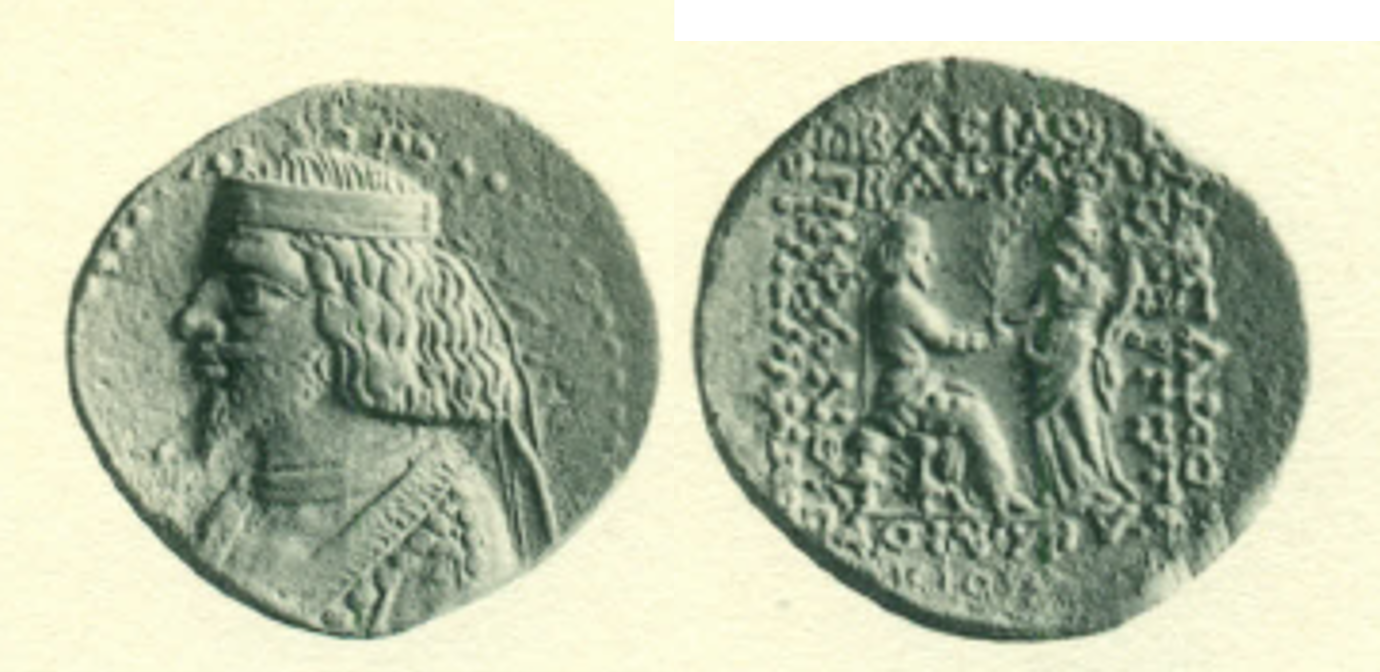57 BCE - 37 BCE | BAΣIΛEΩΣ BAΣIΛEΩN APΣAKOY EYEPΓETOY ΔIKAIOY EΠIΦΛNOVΣ ΦIΛEΛΛHNOΣ
Overstriking coin
Fuÿe_2.png
Description
| ObverseInscription or printing placed on the obverse.:
|
Bust left, wearing torque ending in sea-horse or griffin, diadem and drapery. Border of dots.
|
ReverseInscription or printing placed on the reverse.:
|
BAΣIΛEΩΣ BAΣIΛEΩN APΣAKOY EYEPΓETOY ΔIKAIOY EΠIΦΛNOVΣ ΦIΛEΛΛHNOΣ (Greek) Orodes enthroned right in front of Tyche holding palm and cornucopia.
|
Mint and issuing power
Chronology
| FromIdentifies the initial date in a range assigned in a numismatic context. 57 BCE toIdentifies the final date in a range assigned in a numismatic context.. 37 BCE
|
Hellenistic 323-30 BC  periodTime period of the numismatic object. periodTime period of the numismatic object.
|
Physical description
MetalThe physical material (usually metal) from which an object is made.: Silver 
|
|
DenominationTerm indicating the value of a numismatic object. Examples: tetradrachm, chalkous, denarius.: tetradrachm 
|
|
|
|
|
References
Description
| ObverseInscription or printing placed on the obverse.:
|
|
ReverseInscription or printing placed on the reverse.:
|
ΚΙΟΥ
|
Mint and issuing power
| MintIdentifies the place of manufacture or issue of a numismatic object. ᵖ:
|
|
Ancient regionAncient region. ᵖ
|
|
Modern countryModern country:
|
AuthorityIdentifies the authority in whose name (explicitly or implicitly) a numismatic object was issued. ᵖ:
|
|
Chronology
| FromIdentifies the initial date in a range assigned in a numismatic context. toIdentifies the final date in a range assigned in a numismatic context..
|
periodTime period of the numismatic object.
|
Physical description
References
| Frequency of overstrikesFrequency of overstrikes:
|
rare and spread
|
Level of confidenceLevel of confidence of the identification:
|
strong
|
| RemarksRemarks:
|
"Sous le siège, deux points ? ou peut-être des lettres; à l'exergue, à l'emplacement habituel du nom du mois, un fragment de légende ....ΚΙΟΥ.... appartenant à une pièce antérieure"
|
